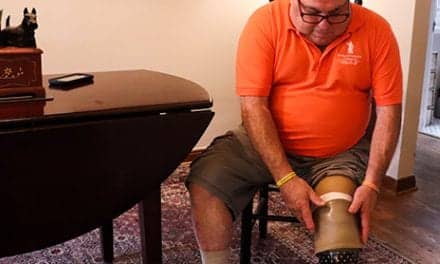A prosthetic hand that is engineered to be controlled via muscle signals is among Time Magazine’s Top 100 Inventions of the Year, BrainCo—the Somerville, Mass-based company that designed it—reports in a news release.
The prosthetic hand works by detecting the electrical signals an amputee’s residual limb produces as he or she imagines moving it. It then decodes these signals to enable users to actually move the prosthetic just like they would their hand, via an advanced algorithm that allows users to control it.
BrainCo’s prosthetic hand is also designed to give users control over individual finger movements. In addition, instead of only using pre-programmed gestures, users can define their own gestures and train the hand to respond to their intentions. Users have used BrainCo’s prosthetic hand to play the piano, write calligraphy, and complete everyday tasks, according to the company, in the release.
[Source(s): BrainCo, PR Newswire]





